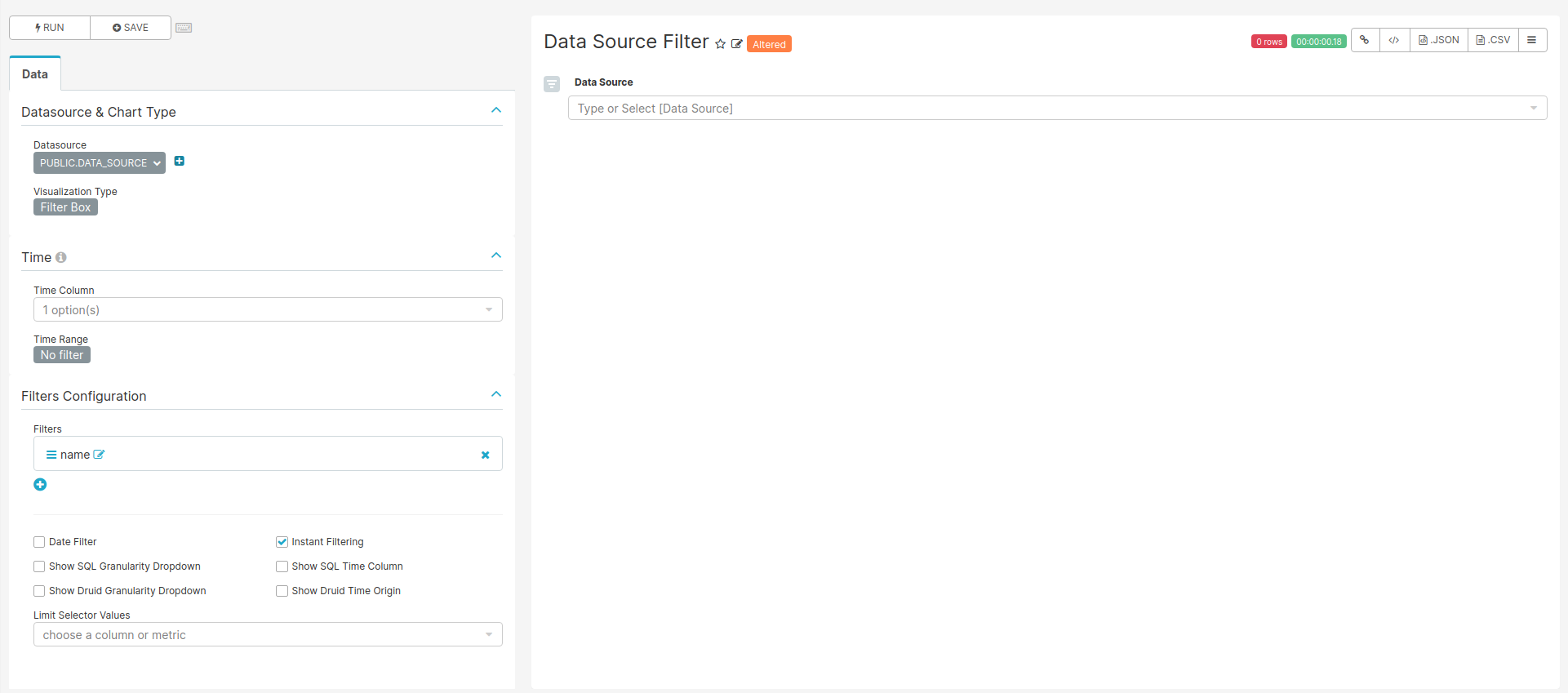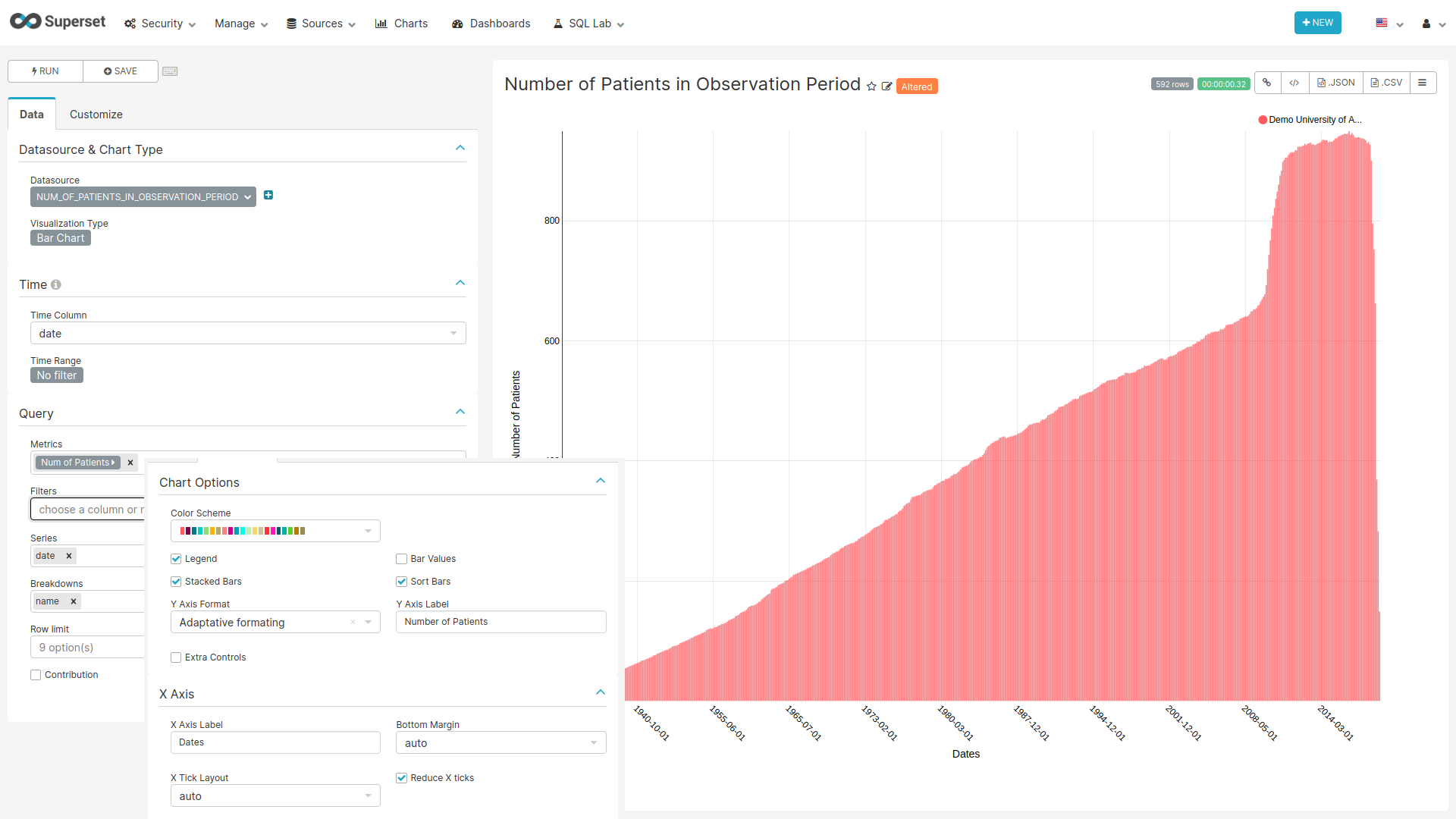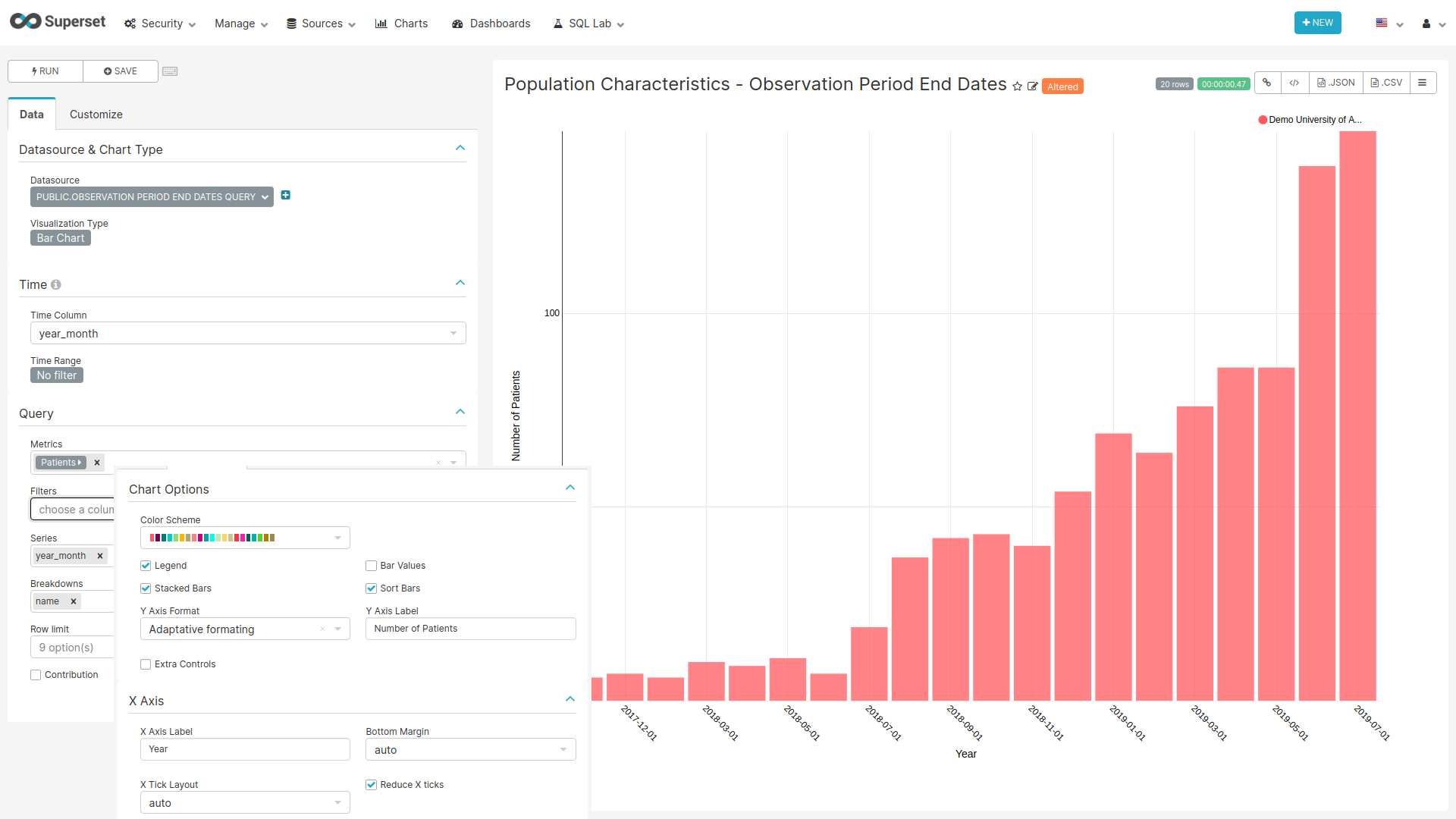9.6 Observation Period [Deprecated]
CSS
To hide the dashboard header insert the following css code to the CSS field on the edit page:
.dashboard > div:not(.dashboard-content) { /* dashboard header */
display: none;
}With this every time you want to edit the dashboard layout you have to either comment the CSS inserted or remove it so the “Edit Dashboard” button can show again.
Data Source Filter

Figure 9.8: Settings for creating the Data Source filter chart
For the filter to work the name of the fields to filter should match in all tables used on the charts of this dashboard.
SQL query
No SQL query, use the sql table data_source of the achilles database.
Chart settings
- Data Tab
- Datasource & Chart Type
- Visualization Type: Filter Box
- Time
- Time range: No filter
- Filters Configuration
- Filters:
- name
- Date Filter: off
- Instant Filtering: on
- Filters:
- Datasource & Chart Type
Number of Patients in Observation Period
The Number of Patients in Observation Period plot shows the number of patients that contribute at least one day in a specific month.

Figure 9.13: Settings for creating the Number of Patients in Observation Period chart
SQL query
SELECT source.name,
source.acronym,
to_date(stratum_1, 'YYYYMM') as Date,
count_value
FROM public.achilles_results AS achilles
INNER JOIN public.data_source AS source
ON achilles.data_source_id=source.id
WHERE analysis_id = 110Chart settings
- Data Tab
- Datasource & Chart Type
- Visualization Type: Bar Chart
- Time
- Time range: No filter
- Query
- Metrics: MAX(count_value) with label “Num of Patients”
- Series: date
- Breakdowns: name
- Datasource & Chart Type
- Customize Tab
- Chart Options
- Stacked Bars: on
- Sort Bars: on
- Y Axis Label: Number of Patients
- X Axis
- X Axis Label: Dates
- Reduce X ticks: on
- Chart Options
Observation Period Start Dates

Figure 9.14: Settings for creating the Observation Period Start Dates chart
SQL query
SELECT source.name,
source.acronym,
to_date(stratum_1, 'YYYYMM') AS year_month,
count_value
FROM public.achilles_results AS achilles
INNER JOIN public.data_source AS source
ON achilles.data_source_id=source.id
WHERE analysis_id = 111Chart settings
- Data Tab
- Datasource & Chart Type
- Visualization Type: Bar Chart
- Time
- Time range: No filter
- Query
- Metrics: SUM(count_value) with label “Patients”
- Series: year_month
- Breakdowns: name
- Datasource & Chart Type
- Customize Tab
- Chart Options
- Stacked Bars: on
- Sort Bars: on
- Y Axis Label: Number of Patients
- X Axis
- X Axis Label: Year
- Reduce X ticks: on
- Chart Options
Observation Period End Dates

Figure 9.15: Settings for creating the Observation Period End Dates chart
SQL query
SELECT source.name,
source.acronym,
to_date(stratum_1, 'YYYYMM') AS year_month,
count_value
FROM public.achilles_results AS achilles
INNER JOIN public.data_source AS source
ON achilles.data_source_id=source.id
WHERE analysis_id = 112Chart settings
- Data Tab
- Datasource & Chart Type
- Visualization Type: Bar Chart
- Time
- Time range: No filter
- Query
- Metrics: SUM(count_value) with label “Patients”
- Series: year_month
- Breakdowns: name
- Datasource & Chart Type
- Customize Tab
- Chart Options
- Stacked Bars: on
- Sort Bars: on
- Y Axis Label: Number of Patients
- X Axis
- X Axis Label: Year
- Reduce X ticks: on
- Chart Options